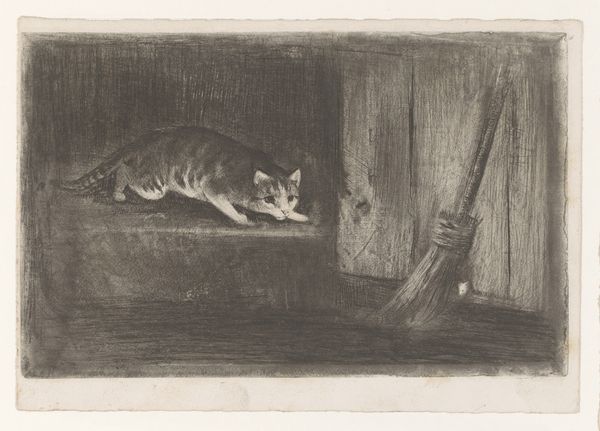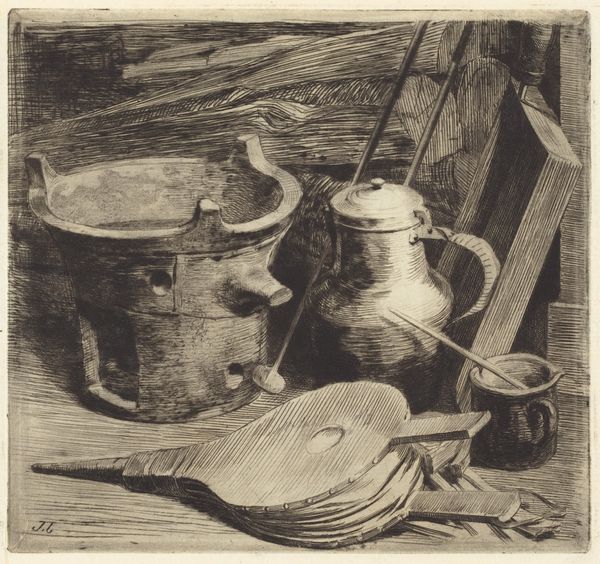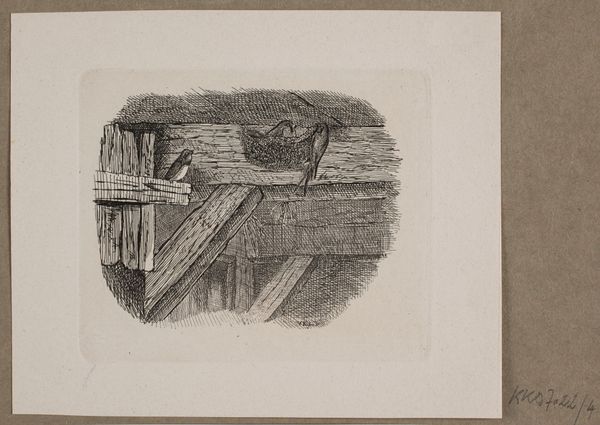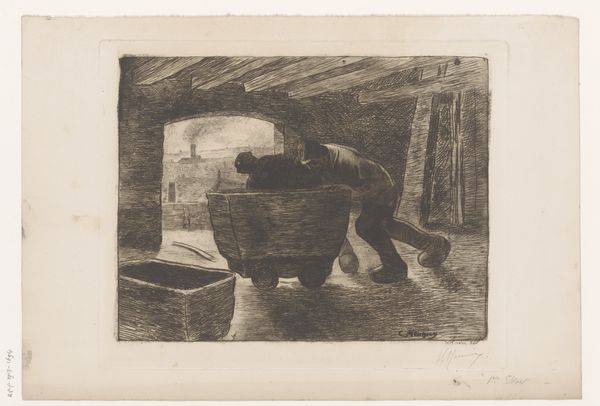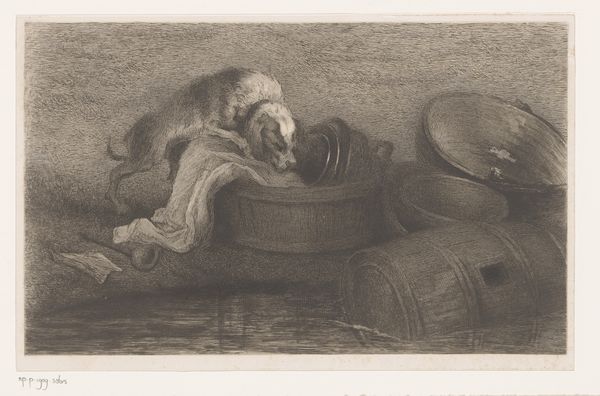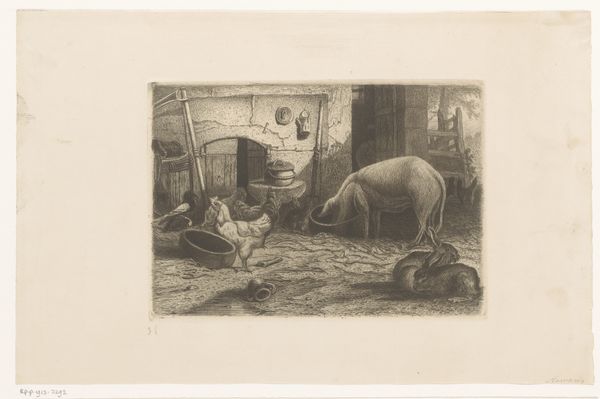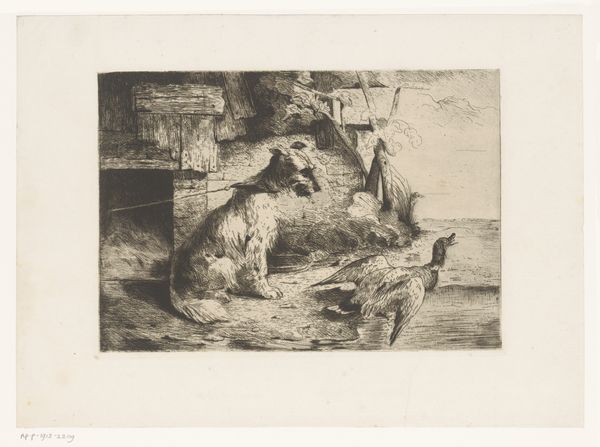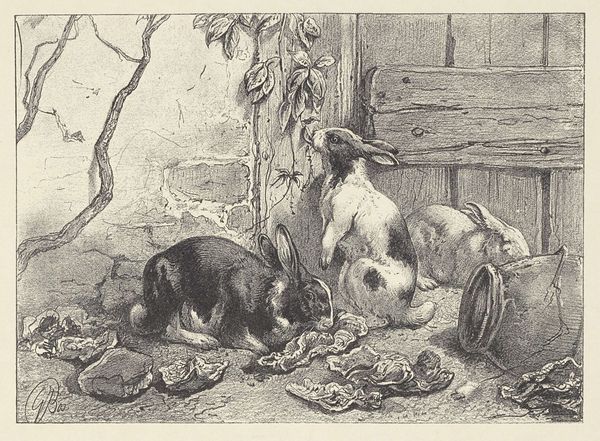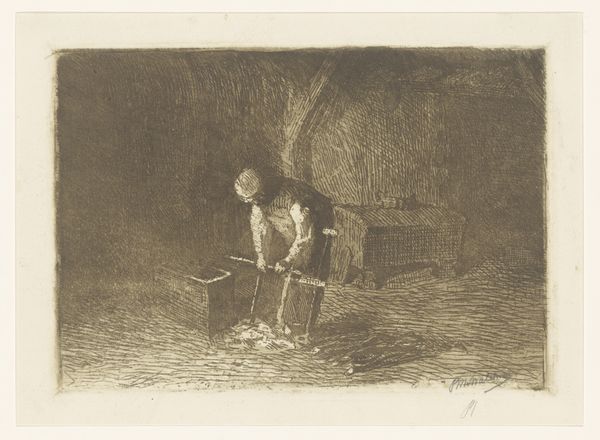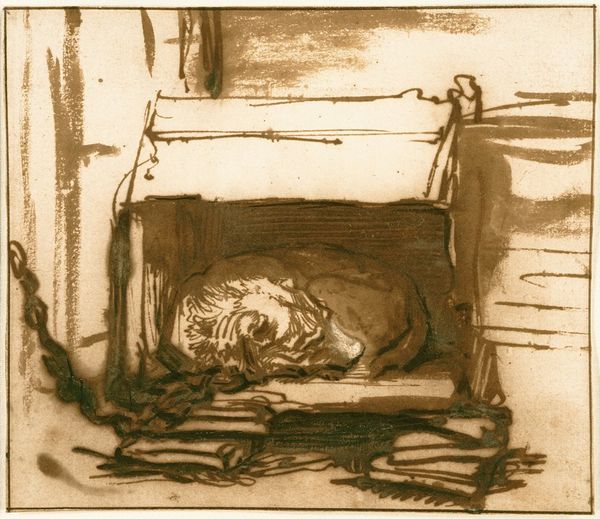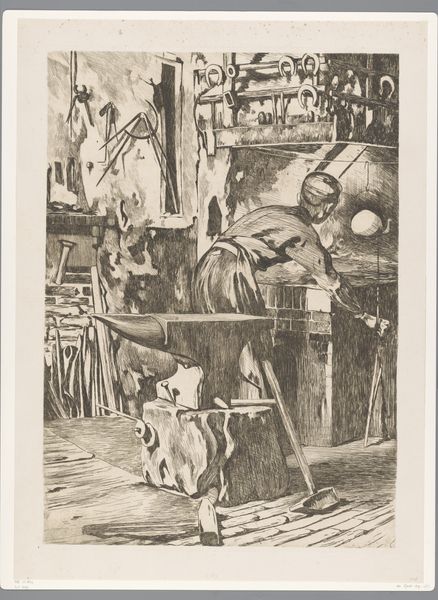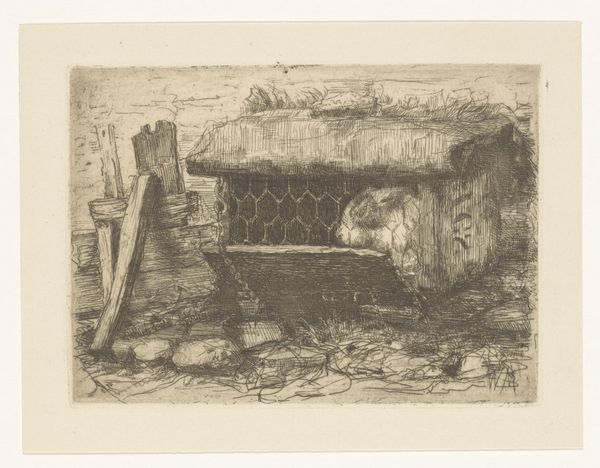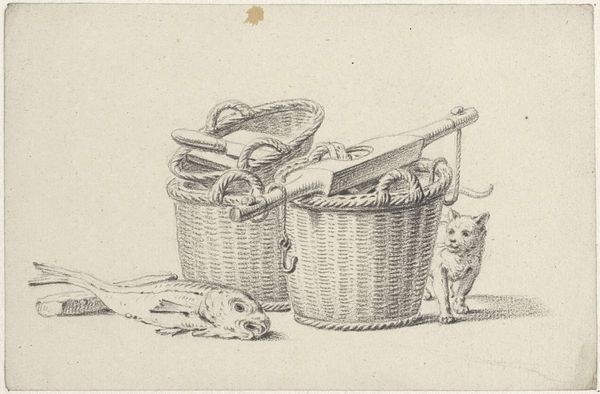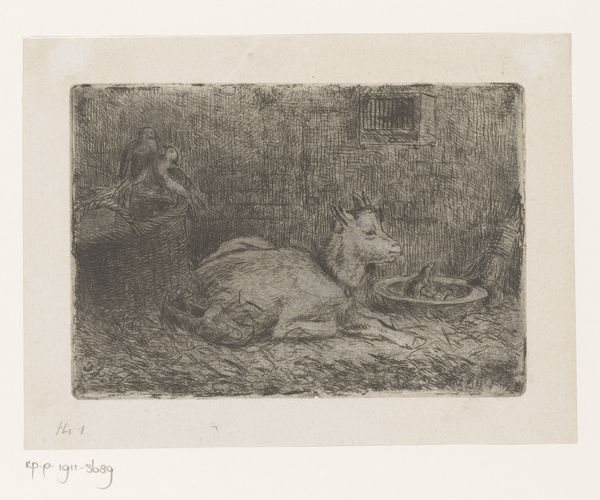
Dimensions: height 163 mm, width 225 mm
Copyright: Rijks Museum: Open Domain
Curator: This is "Kat en muis," or "Cat and Mouse," an etching and engraving by Charles Verlat, created sometime between 1834 and 1890. Editor: It's strikingly stark, almost bleak. The sharp lines of the engraving create this harsh light, drawing your eye immediately to the cat's unsettlingly human gaze. There is also something compelling about the bucket, it looks well-worn like a sign of the cat's labor. Curator: I’m intrigued by that initial reaction. Verlat uses this humble, domestic scene, likely observed directly from daily life, but imbues it with an undeniable symbolism. Cats, of course, have a very long and winding association with luck, and especially as women's familiars throughout Western history. The tension between the seen and unseen is central to both genre. Editor: Yes, but consider how Verlat achieves this emotional resonance. The printmaking process itself, the painstaking work of etching and engraving, transforms an everyday scene into something laden with deeper cultural significance. The materials matter here: the metal plate, the acid, the deliberate mark-making. And, of course, consider the reproduction, this isn't a unique artwork: we see class being implied, a domestic worker can produce and disseminate this image widely in contrast to a unique painting held only for elites to observe. Curator: Certainly, the reproducible nature of printmaking is vital, enabling broader access to the artwork and challenging traditional notions of artistic exclusivity. But beyond its material production, I find it interesting how Verlat has placed the broom front and center, nearly obscuring the mouse's hidden sanctuary. Editor: It feels like a direct visual language of domestic roles: the woman with the broom cleaning out vermin, and her partner with her. One might argue that the very act of depicting this seemingly mundane interaction elevates labor and resourcefulness as themes worthy of artistic exploration, challenging assumptions about what constitutes 'high art'. Curator: Precisely, it all folds back into the layered symbolism, even the mundane objects of a pre-industrial workplace echo deep into cultural assumptions. Editor: It highlights, doesn't it, the very tangible process through which meaning is constructed, connecting social realities, and these common objects, into an etched reflection. Curator: Indeed. The simple "Cat and Mouse" offers us so much more than a peek into 19th-century domestic life. It's an evocative and subtle reflection on symbols and labor in society.
Comments
No comments
Be the first to comment and join the conversation on the ultimate creative platform.
